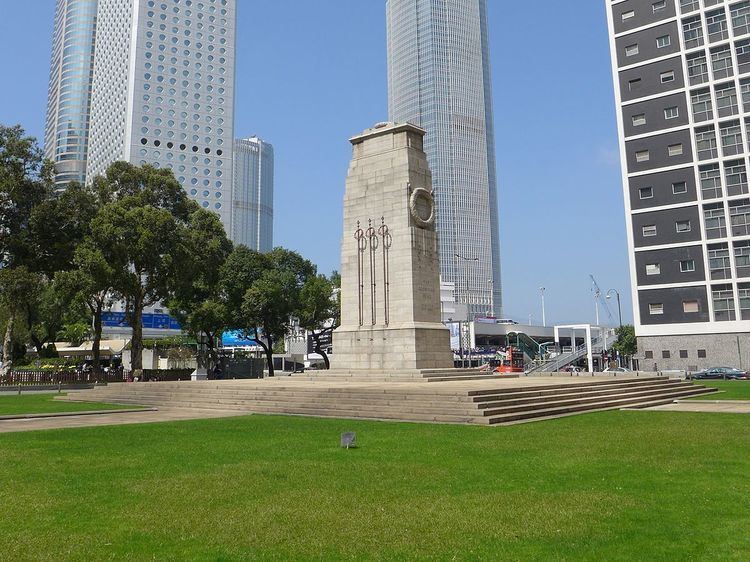Location Statue Square Address Central, Hong Kong Designated as world heritage site 22 November 2013 | Reference no. 102 Year built 1923 | |
 | ||
Hours Open today · Open 24 hoursSaturdayOpen 24 hoursSundayOpen 24 hoursMondayOpen 24 hoursTuesdayOpen 24 hoursWednesday(Qingming Festival)Open 24 hoursHours might differThursdayOpen 24 hoursFridayOpen 24 hoursSuggest an edit Similar Statue Square, Court of Final Appeal B, Former French Mission B, Flagstaff House, St John's Cathedral | ||
The cenotaph hong kong
The Cenotaph (Traditional Chinese: 和平紀念碑) is a war memorial, constructed in 1923 and located between Statue Square and the City Hall in Central, Hong Kong, that commemorates the dead in the two world wars who served in Hong Kong in the Royal Navy, British Army and Royal Air Force. Built in stone, it is an almost exact replica of the Cenotaph on Whitehall in London, UK (designed by Sir Edwin Lutyens and unveiled in 1920). It is listed as a monument under the Antiquities and Monuments Ordinance.
Contents
History
The Cenotaph was unveiled on 24 May 1923 (Empire Day) by the Governor Sir Reginald Edward Stubbs. At that time, the location was still on the waterfront. Initially built to commemorate the dead of the First World War, inscribed with the words "The Glorious Dead", the dates 1939–1945 were added later to honour victims of the Second World War, and the Chinese characters 英魂不朽浩氣長存 ("May their martyred souls be immortal, and their noble spirits endure") were added in the 1970s to commemorate those who lost their lives during the Japanese invasion.
On 22 November 2013, The Cenotaph was gazetted as a monument under the Antiquities and Monuments Ordinance.
Liberation Day
During British rule, after 1945, Liberation Day commemoration took place here on the last Monday in August to commemorate the Liberation of Hong Kong from Japanese occupation in 1945. No official ceremonies have taken place here since 1997. Unofficial delegations do mark events here, and the flag poles are occasionally dressed.
Hong Kong's invasion was part of the Pacific Campaign of World War II, which is a separate development from the events happening on the Chinese mainland. Hong Kong was defended by the Hong Kong's Garrison formed by soldiers drawn from Commonwealth nations (See Battle of Hong Kong).
Remembrance Day
The Remembrance Sunday observance in Hong Kong is marked by a multi-faith memorial service at the Cenotaph. The service is organised by the Royal British Legion (HK & China Branch) and the Hong Kong Ex-Servicemens Association and is attended by various Government officials, as well as representatives of various religions including the Anglican Church, the Roman Catholic Church, the Eastern Orthodox Church, the Buddhist community, the Taoist community, the Muslim community and the Sikh community. Although Hong Kong ceased to be part of the Commonwealth of Nations in 1997, the memorial service still resembles those in many other Commonwealth countries. The service includes the sounding of "Last Post," two minutes of silence, the sounding of "Reveille", the laying of wreaths, prayers, and ends with a recitation of the "Ode of Remembrance". The Hong Kong Police Force Pipe Band continues to perform their ceremonial duty at the service.
ANZAC Day
There are commemorative events in front of the Cenotaph every year on Anzac Day. The events are held at dawn and are attended by the Consuls-General (or the High Commissioners before 1997) of Australia and New Zealand.
Flags
Prior to 1997, the Royal Naval Ensign, Union Jack and colonial flag of Hong Kong flew at the Cenotaph. Since 1997 no flags are flown except on Remembrance Day, when the flags of Hong Kong, the People's Republic of China and Hong Kong Ex-Servicemens Association are present.
